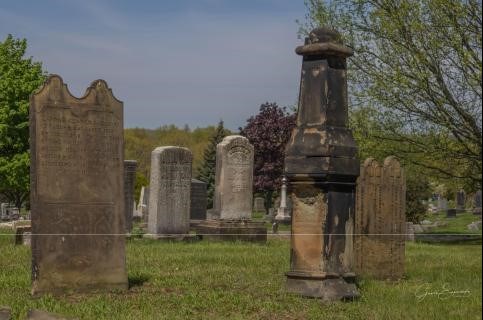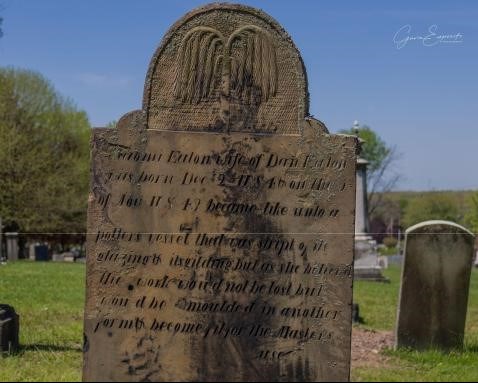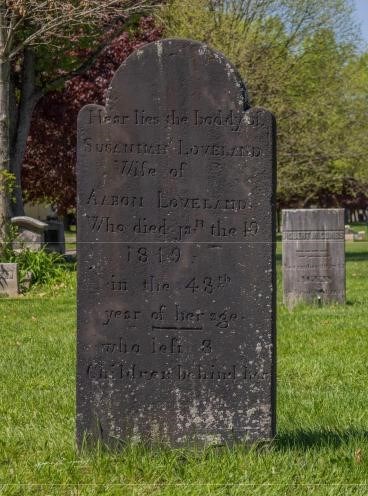Niles Union Cemetery
Exploring Ohio’s History
This is an abbreviated version of an article written by Gavin Esposito, to read the full article, please follow this link.

Niles Cemetery got its start in 1806 when Hannah Heaton, the six-year-old daughter of James Heaton, the founding father of Niles, passed away and was buried in what is now the southeast corner of the cemetery. On March 28th, 1863, upon being deeded to Weathersfield Township by Oliver and Henry Kyle, the Jack Oak Burying Ground became the Niles Union Cemetery. Subsequently, the cemetery saw more additions in 1873, 1895, 1905, and 1915; and by time expansion ceased in 1930, the cemetery had grown to a rolling 40 acres in size, with the original “pioneer” tract surrounded by new lots and gradually falling into disuse. Then decades later on May 31st, 1985, Niles was struck by a phenomenon with such uncommon fury that it has yet to be matched since, an EF-5 tornado with winds upwards of 300 miles per hour.
Spawning in Portage County near the Ravenna Arsenal, the cyclone tore through Newton Falls before entering Niles from the west. With Niles Union Cemetery directly in its path, the historic cemetery took a direct hit. First, the stately trees that lined Niles-Vienna Road and then the oldest section where a multitude of fragile 19th-century markers were damaged along with over 800 other headstones. Almost immediately, restoration commenced, with the Niles Monument Co. spearheading efforts and fixing almost 500 headstones simply due to the number of markers that were either unclaimed by the living or hindered the restoration process. To easily find the graves featured in this presentation, markers are listed in order of appearance as one walks through the cemetery, starting at the Niles-Vienna Road driveway with a focus on the oldest section of the cemetery. Photographs are also included for easy identification.
Well-Known Figures in Niles Union Cemetery
James Heaton: Niles' Founding Father

Born on February 2nd, 1772, in Berkeley, Virginia, and married in 1790 to Margaret Williams, with whom he had four children, James left his family behind in Greene County around 1802, and along with his brother Dan, came to Northeast Ohio, settling in present-day Struthers. Armed with the knowledge of ironmaking from their fathers’ ventures, the men saw Yellow Creek with its rich iron ore deposits and thick forests for charcoal as the perfect place to build a furnace. However, the brother’s partnership was not successful, and by 1806 it had dissolved, resulting in it being sold off. Then later that year following the collapse of the Heaton brothers’ venture, James relocated, settling at a spot near the juncture of the Mahoning River and Mosquito Creek.
By 1834, Heaton’s Furnace had grown into a village and realizing this James handed over control of his furnaces to his sons and drew up an appropriate town plat of squared-off lots and marked streets. Along with these changes came the need for a new name. A man of intellect and principles, Heaton was a devoted reader of the Baltimore-based, Whig-leaning newspaper The Niles Register, published by Hezekiah Niles. With this, he named the new village “Nilestown,” however in 1843, it was shortened to “Niles” by the Post Office Department for convenience. With the arrival of the Pennsylvania–Ohio Canal in 1839, the community grew even more, and from then onward, it became one of the main industrial cities of not only Trumbull County. Unfortunately, not long after this on December 6th, 1856, at the age of 85, James Heaton passed away. He was then interred at the Union Cemetery next to his wife, Margaret who died in 1823 beneath a unique brownstone obelisk, surrounded by various other members of the Heaton family.
Naomi Eaton: Counting Differently

At first glance, the headstone of Naomi Eaton does not appear to be much different from the headstones surrounding it. Other than being slightly taller and thicker than most, it is made of sandstone and is of the three-shouldered ‘headboard” type, popular during the early 19th century. It is not until you read the epitaph that you get a feel for what makes this marker so unique. It states Naomi Eaton was born on “Dec 2nd, U.S. 4” and died “on the 5th of Nov U.S. 43.” While nothing is amiss with the months, it is the years that catch passerby’s off guard, as instead of bearing expected numerals from the 18th and 19th century as other stones in the cemetery; this stone seems to date from the 1st century––long before the United States even existed! The answer likely lies with Naomi’s eccentric husband, Daniel. Born Naomi Hill in Frederick, Virginia, in 1795 she became acquainted with the brother of James Heaton, Daniel. Marrying him that year at only 15 years old, the couple lived together in Pennsylvania until just after the turn of the century. Then in 1802, with Naomi staying behind, Daniel left Greene County coming to Northeast Ohio along with his brother James to erect a forge along the banks of Yellow Creek.
However, upon their venture dissolving in 1806, Daniel invited his wife and children to join him at the new community of Heaton’s Furnace. Arriving here with her six children, Naomi lived a comfortable life as her husband was a respected member of the community. Knowledgeable when it came to politics, in 1813 he was elected to represent Trumbull County in the State Senate. Nonetheless, Daniel was an eccentric person. A “pronounced deist and a most outspoken unbeliever” around the time of becoming a state senator. Unfortunately, in 1818, Daniel was left a widower when Naomi, his wife of 23 years passed away at the age of 37. While it is not precisely known if Daniel directly influenced the stonecutter’s hand while carving this unique marker, traits of his eccentrics are evident on the epitaph: Instead of bearing dates in the traditional anno domini format which counts the years from Christ’s birth, the marker counts years since the United States declared independence from Great Britain. “U.S, 4” corresponds to 1780, four years after 1776, while “43” corresponds to 1818––43 years thereafter.
Susannah Loveland: Who Left 8 Children Behind Her

Early Niles resident Susannah Loveland was the matriarch of a large family––having eight children in total. Marrying Aaron Loveland, a fellow native of Glastonbury on October 1st, 1789, at the age of 18, just a year later, on December 6th, 1790, she entered motherhood with the birth of her first child, Harriet. From thereon over an almost 20-year span from 1792 until 1811, seven more children would be born to the couple: Horace in 1792, David, in 1796, Lucy, in 1799, Lucinda, in 1802, Aurora, in 1805, Asel in 1807, and lastly Eliza in 1811. In 1812, perhaps at the prompting of her husband who saw the fertile lands of the Western Reserve as more suitable for raising a large family than that of Connecticut, Susannah would come to Trumbull County along with eight children in tow. Settling at Niles, her life here in Ohio was brief, lasting only seven years as on January 19th, 1818, she passed away at the age of 48 years.
Interred at the Niles Union Cemetery in the original pioneer tract, then known as the ‘Old Jack Burying Ground,” her grave is topped by a typically shaped headstone of the era made of mudstone––a charcoal-colored sedimentary stone. However, compared to those around it, it is incredibly crude, as the lettering is plainly cut, the phrasing antiquated, and the spelling nonstandard. Heralded by the phrase “here lies the body of” ––spelled here as “hear lies the boddy of” –– by the time of Susannah’s death, this wording would have been out of date and almost Puritanical, replaced by the more remembrance-oriented wording of “in memory of.” Although plain and unrefined as it may be, the marker commemorates Susannah’s lot in life as a mother, noting on the epitaph that in death she “left 8 children behind her.”

